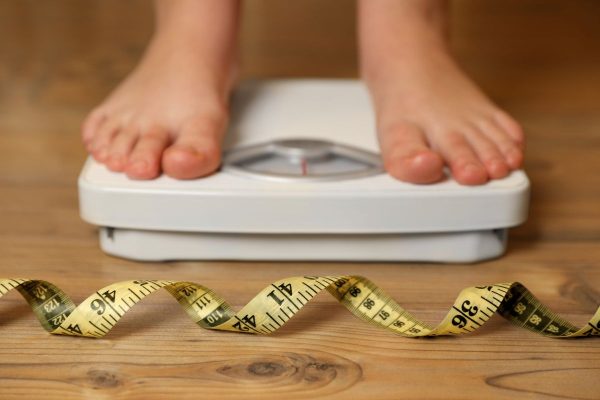How moving with intention supports better comfort and flexibility
Long hours spent sitting or repeating the same motions often lead to stiff joints and tired muscles. Many people stretch once in a while, but mobility exercises go a step further. They gently guide joints through their full range of motion, helping the body move better throughout the day. Adding them to a routine creates space for ease and comfort, whether during work, workouts, or rest.
These exercises aren’t only for athletes or people in physical therapy. They’re useful for anyone who wants to feel more comfortable while moving. Even something as simple as reaching a shelf or bending to tie a shoe feels better when joints move freely. Mobility work fits neatly into busy lives because it doesn’t need much space, time, or equipment.
By focusing on small, thoughtful movements, people begin to notice where their bodies feel tight or limited. From there, progress builds over time. Mobility becomes a quiet form of self-care that works behind the scenes to support energy, posture, and everyday function.
Creating ease in daily motion with gentle warm-ups
Starting the day or a workout with a few minutes of mobility work can make a difference in how the body feels. It prepares joints and muscles for the tasks ahead, whether it’s a brisk walk, lifting boxes, or working at a desk. These exercises wake up the body and invite better posture from the start.
One simple example is a shoulder roll. They loosen tightness from sitting and help reset posture before moving into a task. Hip circles or gentle leg swings also help ease stiffness from sleep or long periods of rest. These motions aren’t meant to be fast or forceful—they work best when done slowly and with attention.
The goal isn’t to stretch the body to its limits. It’s to move through a full, comfortable range. These warm-ups bring circulation into the muscles, keep joints healthy, and reduce the risk of aches or injuries throughout the day. Over time, this practice turns into a natural step before most activities.
Supporting posture and spinal alignment
Back and neck discomfort are common, especially for people who sit for long hours. Poor posture builds slowly, often going unnoticed until pain begins. Mobility exercises designed for the spine help reset alignment and support better posture without the need for constant correction throughout the day.
Simple moves like spinal rotations or gentle cat-cow stretches can bring relief. They remind the spine to stay mobile rather than locked in one position. Doing a few of these exercises in the morning or during breaks helps prevent the stiffness that leads to long-term discomfort.
These movements also support the body’s natural curves. When the spine moves well, the rest of the body follows. Shoulders rest where they should, hips stay balanced, and the neck doesn’t carry too much strain. With consistent practice, these habits lead to more comfortable posture during work, chores, and rest.
Improving joint health through full range of motion
Joints are designed to move—but without regular motion, they start to stiffen. This limits how easily a person can bend, twist, or reach. Mobility exercises give joints the kind of movement they need to stay healthy and well-lubricated. It’s not about stretching deeper, but moving with care.
For example, ankle rolls or toe taps can support better walking and balance. Wrist circles help ease tension from typing or phone use. Shoulder blade slides keep upper-body motion smooth. These kinds of exercises don’t just keep joints mobile—they also encourage better awareness of how each joint feels and functions.
By gently guiding joints through movement each day, the body maintains its comfort and adaptability. It’s like brushing teeth—simple, daily upkeep that pays off over time. These habits support strong, pain-free motion and help reduce wear from repetitive tasks or poor posture.
Easing lower body tightness and improving stride
Hips, knees, and ankles carry the body all day. When these joints are stiff, even small tasks can feel harder. Mobility work focused on the lower body helps improve comfort while walking, sitting, or climbing stairs. It also keeps the legs steady and balanced, reducing the chance of strains or falls.
Gentle lunges, leg swings, or seated knee lifts are good starting points. These movements increase circulation and give joints a wider range of safe motion. Over time, they support stronger, more confident steps. For people who stand or walk for long periods, this makes a noticeable difference.
Adding lower body mobility into a routine helps loosen tight hamstrings and hip flexors—areas that often tighten from too much sitting. This doesn’t just improve comfort; it also supports a more natural stride, better posture, and less fatigue during everyday tasks.
Keeping shoulders free and reducing upper body tension
Shoulders often carry tension from stress, poor posture, or repetitive motions like typing. Over time, that tension spreads to the neck, arms, and even the lower back. Simple mobility drills help ease these patterns. They bring gentle motion into a joint that’s meant to move freely but often stays stuck.
One effective move is a slow shoulder circle, done forward and backward with control. Arm swings and wall slides also support the joint’s ability to move smoothly. These movements help break the habit of holding tension in the shoulders without even realizing it.
Over time, better shoulder mobility leads to smoother motion in the arms and back. It reduces the risk of overuse injuries and helps with daily comfort. Whether reaching into a cupboard or carrying a bag, free-moving shoulders make everything feel a little easier.
Adding movement breaks to long workdays
Long stretches of sitting create tension in the hips, neck, and lower back. Short mobility breaks throughout the day help ease this strain. Even one or two minutes of light motion can reset posture, improve circulation, and wake up the brain during slow moments.
Some people keep a yoga mat nearby or set a gentle reminder to stand every hour. A short standing twist, toe touch, or chest opener can bring relief. These breaks don’t need to feel like exercise—they’re more like short resets that keep the body from locking up.
By adding mobility into work hours, people create small moments of care for their bodies. These moments help the day flow better, reduce end-of-day soreness, and support better energy. Over time, the body begins to expect these breaks and responds with more ease and comfort.
Using breath and motion together for better results
Breath plays a quiet but powerful role in mobility. When paired with movement, it helps the body release tension more fully. Exhaling during the stretch part of an exercise can make it easier to move with control. This connection between breath and motion also helps focus the mind and body together.
For example, someone might inhale while reaching up and exhale while folding forward. During a shoulder circle, a slow breath in can match the upward motion, with a breath out matching the downward path. These patterns turn simple exercises into mindful moments.
Using breath this way helps avoid rushing through motions. It brings attention to how the body feels during each move. This makes mobility work more effective and calming at the same time. Over time, it also improves how movement and breath support each other in other areas of life.
Supporting balance and control through slow motion
Mobility exercises aren’t about speed. In fact, slower movement often brings better results. Slowing down helps build awareness, control, and coordination. It also makes it easier to notice which areas feel stiff, weak, or unsteady. From there, progress begins.
Simple balance moves, like shifting weight from one foot to the other or standing on one leg, support mobility in the feet, ankles, and hips. These exercises don’t need to be long or complex. Their value comes from attention and steady repetition.
As balance improves, so does movement confidence. Tasks like stepping onto a curb, walking across a room, or carrying groceries become smoother. This kind of daily ease is the quiet reward of consistent, thoughtful motion.
Gentle practice builds strength for daily living
Mobility exercises may look small, but their impact is wide. They prepare the body for movement and help prevent small issues from growing into larger ones. Over time, they support strength, stability, and better posture without creating more strain or exhaustion.
People who commit to daily mobility find that they move more easily in other areas of life. They might get up from the floor without effort, lift objects more safely, or recover from a long day faster. These improvements come not from pushing harder, but from moving smarter.
The key is consistency and care. A few thoughtful minutes each day can shift how the body feels. In time, mobility becomes more than just an exercise—it becomes a quiet part of feeling strong, steady, and comfortable every day.




